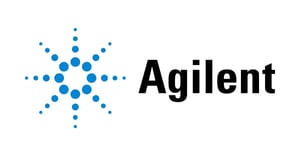Overview
PFAS are highly persistent and resistant to degradation and have been associated with reproductive toxicity, reduced growth metrics in newborns and elevated cholesterol levels in humans. Currently, there are no federal regulations for PFAS in drinking water and as a result many U.S. states have their own regulation or health advisory levels. Our laboratory at the New York State Center for Clean Water Technology (CCWT) has established a certified PFAS testing facility to support ongoing research focused on their occurrence, fate, treatment, and toxicity. This presentation summarizes our experience in developing various EPA methods for PFAS analysis and highlight some method modifications developed for specific applications.
By watching this presentation you will learn:
- How do different EPA methods perform for PFAS quantification?
- What are some challenges in the application of EPA methods for PFAS research?
Presenter Dr. Arjun Venkatesan (Associate Director, Center for Clean Water Technology, Stony Brook University, USA)
Dr. Arjun Venkatesan (Associate Director, Center for Clean Water Technology, Stony Brook University, USA)
Dr. Arjun Venkatesan's research interests include water quality and treatment, fate and transport of organic contaminants, development of novel treatment technologies to remove persistent contaminants, and wastewater-based epidemiology. His current research projects (funded by National Science Foundation, US Department of Energy, US Department of Defense, New York State (NYS), and industry partners) focus on the development and evaluation of novel water treatment technologies to remove perfluoroalkyl substances (PFAS) and 1,4-dioxane. He also serves as the technical director of the NYS Department of Health-certified analytical facility for PFAS analysis. His work on emerging contaminants has been featured in media including PBS News Hour, Royal Society in Chemistry magazine: Chemistry World, NIEHS Environmental Factor, American Society of Agronomy, and ACS Chemical & Engineering News.
In addition, you'll be able to watch the following on-demand presentations...
 Latest Regulations & Standards on PFAS Testing in the Materials Industry
Latest Regulations & Standards on PFAS Testing in the Materials Industry
Dr Yuhong Chen (Global Materials Segment, Applied Markets, Agilent Technologies) Sampling and Analysis of Volatile PFAS in Air by TD-GC-MS
Sampling and Analysis of Volatile PFAS in Air by TD-GC-MS
Carlos Gil (Business Development Manager, Markes International GmbH) Streamlined PFAS Annotation and Visualization with FluoroMatch Flow and Visualizer
Streamlined PFAS Annotation and Visualization with FluoroMatch Flow and Visualizer
Stephen Baumann (Application Applied Segment Manager, Agilent Technologies) Using Thermal Desorption and GC-MS/MS for the Analysis of PFAS Compounds in Air for Improved Detectability & Reliability
Using Thermal Desorption and GC-MS/MS for the Analysis of PFAS Compounds in Air for Improved Detectability & Reliability
Kurt Thaxton (Gerstel)
As well as download the following educational assets...
 Your Guide to Targeted Quantification & Screening of PFAS Compounds in Environmental Matrices
Your Guide to Targeted Quantification & Screening of PFAS Compounds in Environmental Matrices
 Get your lab up to speed for PFAS analysis with the Agilent start-to-finish drinking and surface water eMethod
Get your lab up to speed for PFAS analysis with the Agilent start-to-finish drinking and surface water eMethod
 Customer Testimonial: Watch How Sanexen Environmental Services Meets Client Needs for PFAS Testing
Customer Testimonial: Watch How Sanexen Environmental Services Meets Client Needs for PFAS Testing
 Get Ahead and Stay Ahead with Comprehensive Workflows for Extraction, Screening, Quantification, and Reporting of PFAS in Water Samples
Get Ahead and Stay Ahead with Comprehensive Workflows for Extraction, Screening, Quantification, and Reporting of PFAS in Water Samples
 Meet the Challenges of PFAS Soil Testing in an Evolving Regulatory Framework With Start-to-Finish Workflows
Meet the Challenges of PFAS Soil Testing in an Evolving Regulatory Framework With Start-to-Finish Workflows
sponsored by:


